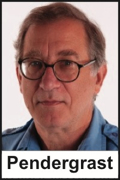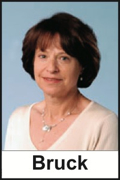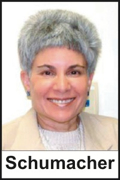Rascals case in brief
In the beginning, in 1989, more than 90 children at the Little Rascals Day Care Center in Edenton, North Carolina, accused a total of 20 adults with 429 instances of sexual abuse over a three-year period. It may have all begun with one parent’s complaint about punishment given her child.
Among the alleged perpetrators: the sheriff and mayor. But prosecutors would charge only Robin Byrum, Darlene Harris, Elizabeth “Betsy” Kelly, Robert “Bob” Kelly, Willard Scott Privott, Shelley Stone and Dawn Wilson – the Edenton 7.
Along with sodomy and beatings, allegations included a baby killed with a handgun, a child being hung upside down from a tree and being set on fire and countless other fantastic incidents involving spaceships, hot air balloons, pirate ships and trained sharks.
By the time prosecutors dropped the last charges in 1997, Little Rascals had become North Carolina’s longest and most costly criminal trial. Prosecutors kept defendants jailed in hopes at least one would turn against their supposed co-conspirators. Remarkably, none did. Another shameful record: Five defendants had to wait longer to face their accusers in court than anyone else in North Carolina history.
Between 1991 and 1997, Ofra Bikel produced three extraordinary episodes on the Little Rascals case for the PBS series “Frontline.” Although “Innocence Lost” did not deter prosecutors, it exposed their tactics and fostered nationwide skepticism and dismay.
With each passing year, the absurdity of the Little Rascals charges has become more obvious. But no admission of error has ever come from prosecutors, police, interviewers or parents. This site is devoted to the issues raised by this case.
On Facebook
Click for earlier Facebook posts archived on this site
Click to go to
Today’s random selection from the Little Rascals Day Care archives….
Click for earlier Facebook posts archived on this site
Click to go to
Today’s random selection from the Little Rascals Day Care archives….
Journalists, too, suffer ‘incurable blind spots’
Jan. 4, 2012
 “A few years back, I met a fellow investigative journalist in North Carolina….The subject came around to the Little Rascals case. He assured me the day care workers were guilty….
“A few years back, I met a fellow investigative journalist in North Carolina….The subject came around to the Little Rascals case. He assured me the day care workers were guilty….
“I told him about how the McMartin case in California had been the first nationally publicized case to use interviews that practically bullied children into reporting mythical, often totally implausible abuse. Little Rascals was a textbook case of the same kind of tactics, and Ofra Bikel’s three fine documentaries left no doubt about this terrible miscarriage of justice.
“Yet my friend refused to listen to any other evidence or point of view. It transpired that his wife had recovered ‘memories’ of sexual abuse – another subject on which he would hear no other evidence….
“I tell you this just to let you know I am familiar with cases in which otherwise objective journalists develop seemingly incurable blind spots.”
– From a 1997 letter to Columbia Journalism Review by Mark Pendergrast, author of “Victims of Memory,” challenging criticism of the False Memory Syndrome Foundation
‘Is it not plain that people had frightened their children?’
Dec. 21, 2011
“Is it not plain that the people had frightened their children with so many tales that they could not sleep without dreaming of the devil, and then made the poor women of the town confess what the children said of them?”
– From Francis Hutchinson’s “Historical Essay Concerning Witchcraft” (1718) describing the 1669 “seduction” of 300 children in Mora, Sweden, which resulted in the burning of 85 “witnesses” (cited in “Victims of Memory” by Mark Pendergrast)
Children don’t remember, but are sure abuse happened
 May 25, 2012
May 25, 2012
“Maggie Bruck, co-author of ‘Jeopardy in the Courtroom: A Scientific Analysis of Children’s Testimony’ and a professor of psychiatry at Johns Hopkins University, says no long-term psychological studies exist that track groups of children involved in alleged sex-abuse rings, in part because of confidentiality issues.
“But Bruck has studied follow-up interviews of children involved in cases similar to the notorious McMartin preschool trial. Some kids continue to believe they were abused. Bruck suspects it’s because their families or therapists have reinforced the stories of abuse. ‘The children say they don’t remember the salient, allegedly terrifying details,’ she told me. ‘But they are sure it happened.’ ”
– From “Who Was Abused?” by Maggie Jones in the New York Times (Sept. 19, 2004)
Might the Little Rascals children be among the subjects of that follow-up research? Sorry, Dr. Bruck says predictably – “Confidential information.”
‘Evidence too compelling to dismiss’? Really?
 Oct. 1, 2012
Oct. 1, 2012
“Since 1983, public and professional interest in maltreatment of young children in day care has increased dramatically. It was then that children first began disclosing allegations of sexual and ritual abuse in the McMartin preschool.
“Although accounts of children being terrorized during satanic rituals seemed bizarre and unbelievable, alarmingly similar allegations against child care facilities throughout the United States prompted public officials, educators and parents to more fully examine the phenomenon. The sheer number of reports and amount of information collected (for legal and therapeutic purposes) provided a rich data base for study.
“Children reporting ritual abuse (RA) have described ceremonial animal and human mutilation and sacrifice, live burial, sacrificial participation or witness, ingestion of human blood, feces, urine and semen, and death threats should they disclose the abuse.
“It should be noted that some doubt the existence of RA…. The prevailing literature since the McMartin case, however, demonstrates that researchers find the evidence too compelling to dismiss…. Perhaps the most reasoned yet sensitive approach to validation is neither unquestioned acceptance nor unequivocal denial, but critical judgment….”
– From “Variables and risk factors associated with child abuse in daycare settings” by Ruth B. Schumacher and Rebecca S. Carlson in Child Abuse & Neglect: The International Journal (September 1999)
Predictably, the references listed by Schumacher and Carlson include an old-school Who’s Who of bad science: e.g., Kathleen Coulborn Faller, David Finkelhor (misspelled “Finklehor”), and Susan J. Kelley (misspelled “Kelly”).
But the authors also cite skeptics Jeffrey S. Victor (“Satanic Panic”), David Bromley and Lee Coleman.
How can this be? How can Schumacher and Carlson have been exposed to such persuasive debunking, yet conclude that “neither unquestioned acceptance nor unequivocal denial” is called for?
Big Tobacco realized early on that instead of beating back every new attack on smoking’s health risks, it needed only to frame the issue as a continuing “controversy” with “two sides.” But what possible advantage accrues to social scientists who take that approach?











0 CommentsComment on Facebook